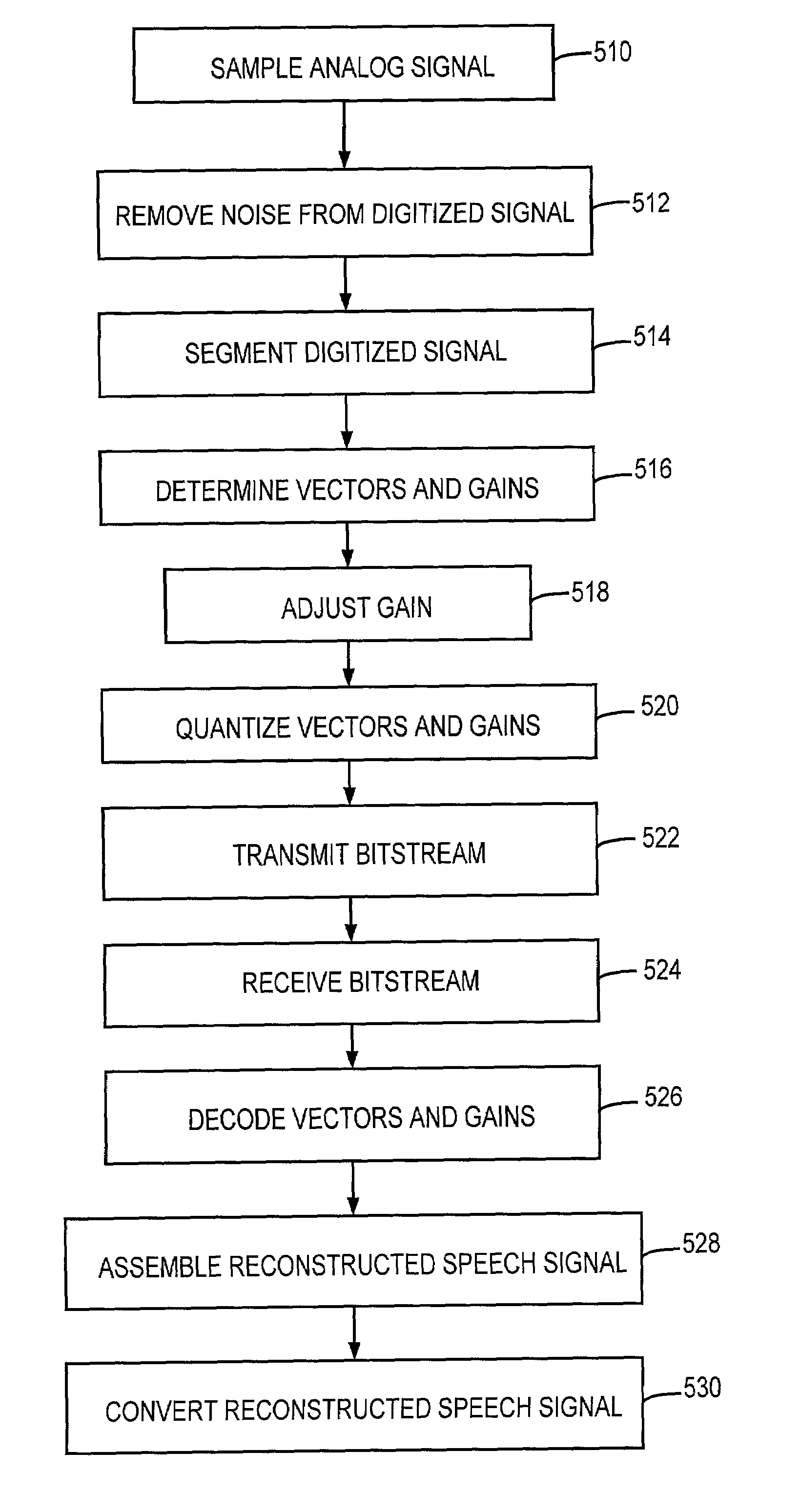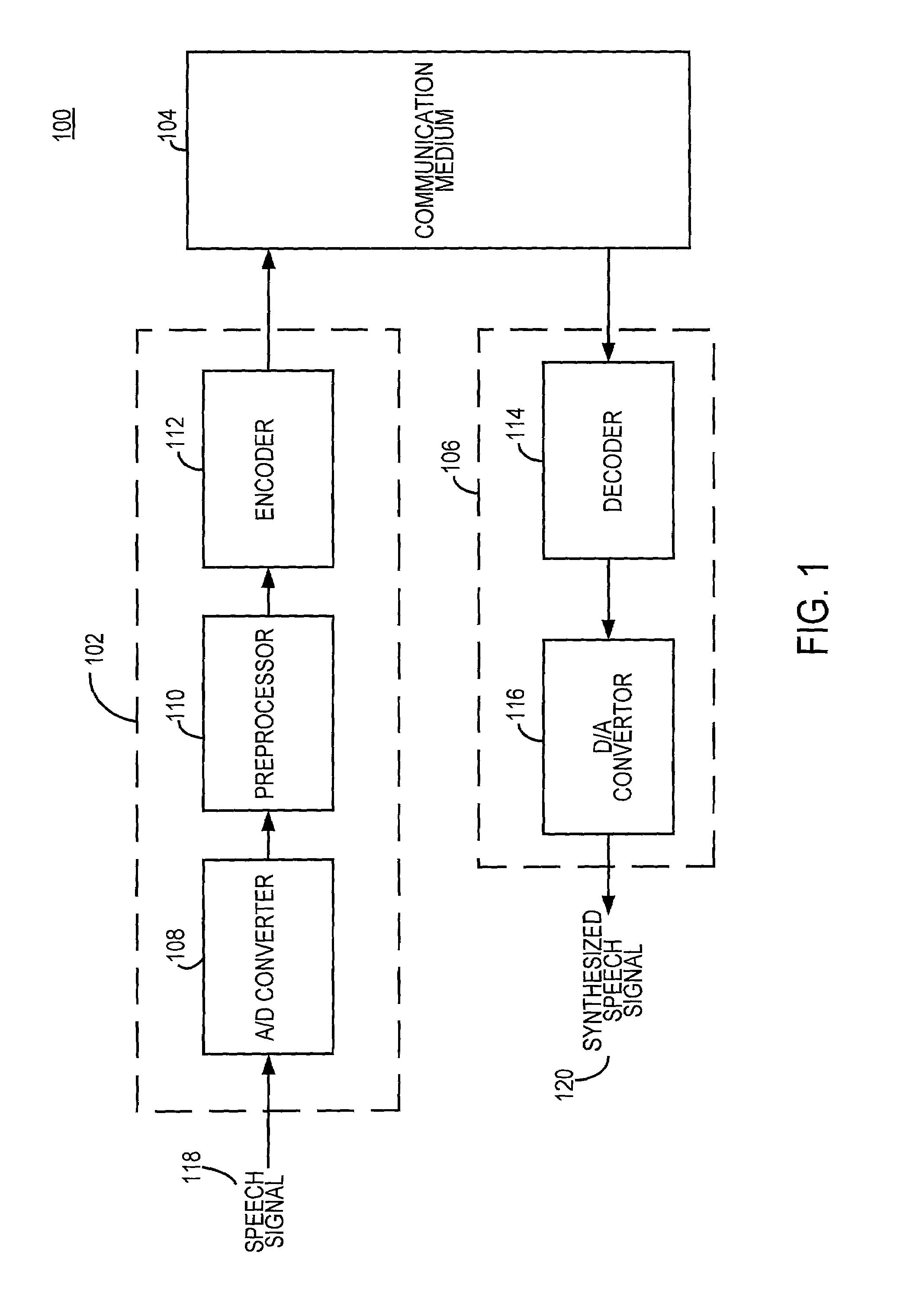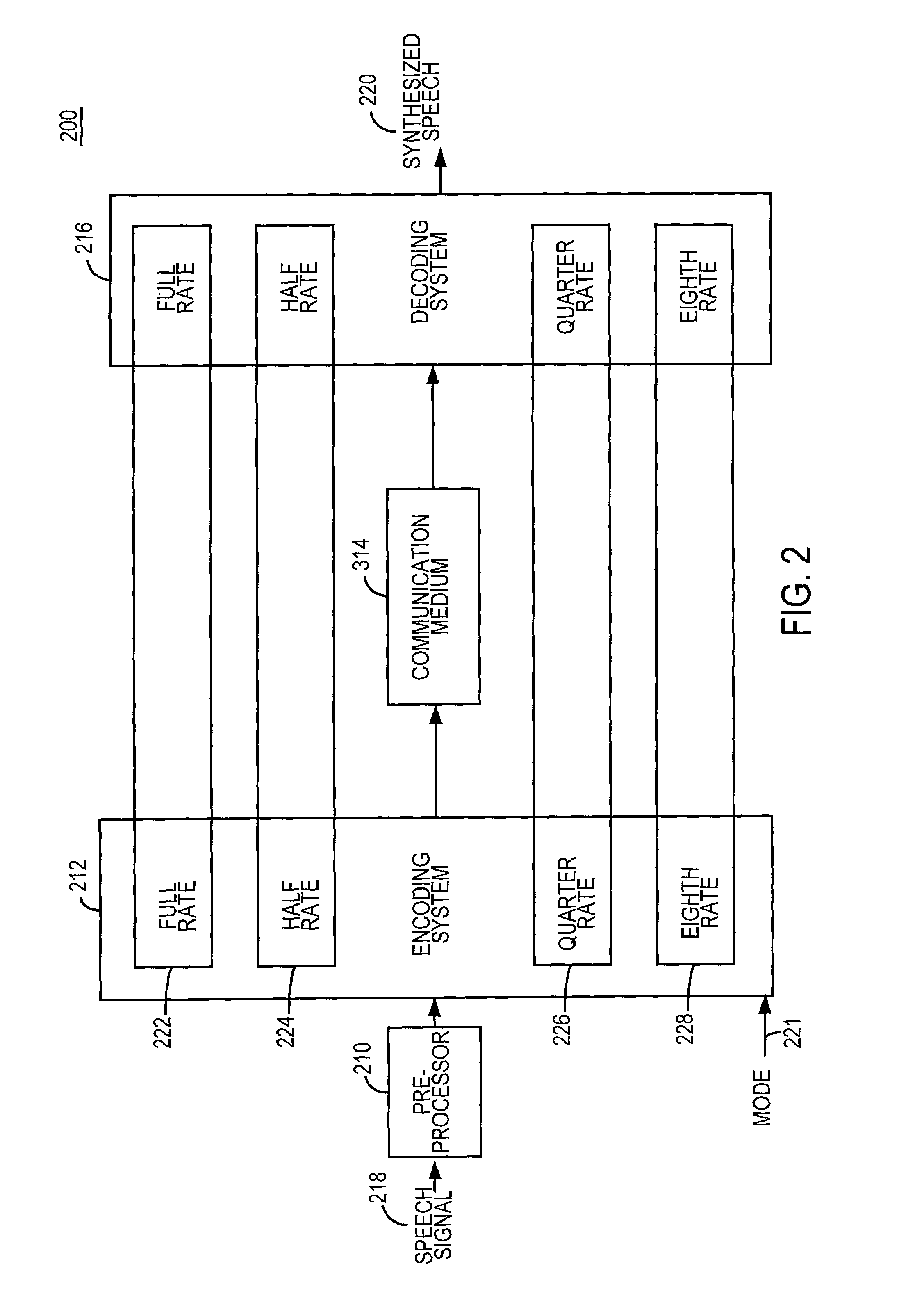Speech coding system with time-domain noise attenuation
a speech coding and time-domain technology, applied in the field of digital speech coding systems, can solve the problems of speech compression techniques, speech quality degradation, and large number of bits, and achieve the effects of reducing background noise, suppressing noise in digitized signals, and reducing noise levels
- Summary
- Abstract
- Description
- Claims
- Application Information
AI Technical Summary
Benefits of technology
Problems solved by technology
Method used
Image
Examples
Embodiment Construction
[0035]FIG. 1 is a block diagram of a speech coding system 100 with time-domain noise attenuation. The speech coding system 100 includes a first communication device 102 operatively connected via a communication medium 104 to a second communication device 106. The speech coding system 100 may be any cellular telephone, radio frequency, or other telecommunication system capable of encoding a speech signal 118 and decoding it to create synthesized speech 108. The communication devices 102 and 106 may be cellular telephones, portable radio transceivers, and other wireless or wireline communication systems. Wireline systems may include Voice Over Internet Protocol (VoIP) devices and systems.
[0036]The communication medium 104 may include systems using any transmission mechanism, including radio waves, infrared, landlines, fiber optics, combinations of transmission schemes, or any other medium capable of transmitting digital signals. The communication medium 104 may also include a storage ...
PUM
 Login to View More
Login to View More Abstract
Description
Claims
Application Information
 Login to View More
Login to View More - R&D
- Intellectual Property
- Life Sciences
- Materials
- Tech Scout
- Unparalleled Data Quality
- Higher Quality Content
- 60% Fewer Hallucinations
Browse by: Latest US Patents, China's latest patents, Technical Efficacy Thesaurus, Application Domain, Technology Topic, Popular Technical Reports.
© 2025 PatSnap. All rights reserved.Legal|Privacy policy|Modern Slavery Act Transparency Statement|Sitemap|About US| Contact US: help@patsnap.com



